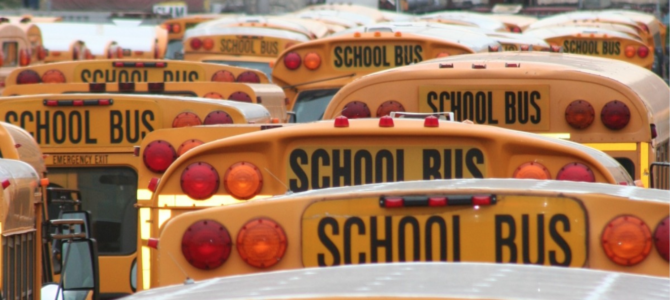
This week, the Manhattan Institute hosted a symposium on the Future of Families in the Childless City at the Princeton Club in the kidless New York City. New York isn’t the only childless city in the Northeast. In fact, many of America’s densest cities are losing families with kids.
I was excited to attend the talk, but lacking child care, I brought my nine-year-old son with me. The director of state and local policy for the Manhattan Institute, Michael Hendrix, broached the questions that spurred the symposium: how to raise kids in New York, what factors go into making the city less child-friendly, how we got here, and why — even in booming economic times — people are simply finding it too difficult to raise families in New York. The answers, panelists said, boil down to education and housing.
Giving background on how we got here was Kay Hymowitz, a contributing editor to the City Journal and William E. Simon fellow at the Manhattan Institute, who experienced this change firsthand. By the early 1980s, men and women earned bachelor of arts degrees equivalently, and these women wanted to use their educations to embark upon careers.
“Women wanted to work,” Hymowitz said. “They were very well suited to the new knowledge economy. They went and got educations.” This led to women “putting off marriage and childbearing as they got more education, more training, [and] started their early years and work in the city.”
The marketplace responded. This new way of living adult life — with money, education, passion for career, and no kids — needed cities to offer matching lifestyle options. The marriage age moved up, and once women married, they wanted to stay in the city to keep their jobs and continue career advancement without the long commutes they would face with a shift to a suburban lifestyle. This increased the price of housing, which is notoriously expensive in New York.
Knowledge Economy Places High Demands on Education
Yet education is a greater issue. The fears George Packer expressed in The Atlantic’s latest issue, in “When the Culture War Comes for the Kids,” about enrolling and keeping his kids in public school were echoed by the panelists as reasons families leave the city before kids hit school age. NYC private schools are prohibitively expensive, even for top earners, and city governments concerned with equity and identity are systematically dismantling the high-achieving tracks in public schools.
It’s “an undermining of basic educational principles in favor of a fairly extreme view of diversity and the needs of diversity,” Hymowitz said, and middle-class parents, although “devoted urbanites,” are not pleased. The feeling among parents is that one poor mark in fourth grade (a rigorous testing year in New York that determines middle school placement) could foul up a child’s entire future.
Hymowitz said “childrearing is more demanding than it used to be. … What it takes to prepare a child for this knowledge economy … the kind of thinking and input that is required … it’s a daily, hourly thing.” Stimulation, enrichment, and teaching children what they need to do starts very young. “When children were more an addition to a household economy, you wanted more kids,” Hymowitz noted. “But even in the dreaded ’50s … there was a feeling that there was a child’s world that parents didn’t have to be engaged in all the time.” That’s simply no longer the case.
In the knowledge economy, parents feel a need to overprepare their children for every potentiality. College is not the end game. A career that enables them to live and work in the city or write their own ticket is the goal. The lifestyle of two professional parents who are engaged in demanding careers while simultaneously trying to prepare their children for that same future demands the kind of top-tier education the New York City Department of Education, with a citywide student body of more than 1.1 million, struggles to provide.
The City Is Becoming a ‘Theme Park of Childless Affluence’
Panelist Derek Thompson of The Atlantic noted that New York is “a city where the share of the population who are school-age children is declining.” Educated families with kids are moving out, and educated young adults with no kids are moving in. New York is becoming a “theme park of childless affluence, where the rich can behave like children without having to see any,” Thompson said. “I want cities to cast off their reputation as temporary portals for the young and an entertainment location for the rich.”
Instead, people are further facilitating these childless lifestyles for wealthy, unattached adults. Brad Hargreaves spoke about Common, a co-living space he founded. Co-living is a concept that came from the surprising fact that there are more roommate households than those composed of nuclear families in the city’s five boroughs. New York City households are 33 percent single, 23 percent roommates (including both low income/high socioeconomic class and immigrant households), 18 percent single families, and 11 percent couples without kids. Hargreaves quipped that, yes, he is an “enabler of delayed adulthood.”
He believes children have become aspirational for many people. “If you ask people how many kids they want, that has stayed the same or ticked up.” But there’s a “gap between what people are desiring and what they are able to do.” Although he sold his last company for $4 million and lives in Manhattan with his wife and their two children, he says raising a family in the city is “still really hard.”
I looked over at my son eating a dinner of cold cuts and cheese from the buffet and watching YouTube on his iPhone. “Yup,” I thought. “It’s really hard.”
Cities Needs Better or Fewer Regulations
Hargreaves’ family solution was a nanny share, but he thinks developers and landlords should be doing a better job of helping families, such as adding play spaces and care facilities. He and his partners are “building ground-up residential buildings for families in urban centers.” It sounds like a great project, but it’s unlikely to be available to low-earning families who also have full-time working parents and a desperate need for affordable child care.
In Vancouver, new zoning regulations mandated that a certain percentage of housing must be for families, and the city designed child-friendly amenities that serve all age groups. “They thought of this like a life-cycle problem,” Thompson said. The result was that Vancouver has seen a larger growth of families, even though it’s one of the most expensive cities in North America.
New York City does not lack zoning regulations, but it could change those regulations to accommodate families and children. “The land-use market is already effectively socialistic,” Hargreaves said. So what does the population want? And how can a balance exist between making the city more affordable at both ends of the income spectrum? Hargreaves believes either better or fewer regulation would improve conditions for families in New York.
Education: the Greatest Urban Roadblock to Families
Even with improvements in housing, education is the main barrier to making the cities more conducive to children. The knowledge economy feeds on brain power, and parents will do anything to make sure their kids can compete and achieve in it.
We have to feed our children to this thing we created, this gaping maw of achievement with long hours and stressful quality of life where we yearn to “work to live” while committing to “live to work.” We tell kids to follow their bliss, to live their dreams, so long as it puts them at the center of a knowledge-based economy where success is its own reward.
SAT tutors have given way to professional preschool preppers. Two-parent households have double the income to pay for the support needed to enrich their small flock and to keep kids in the orbit of the economy they must be shuffled into. Parents who grew up with all the educational accouterments and those who did not are desperate to make sure their kids get every advantage. If the cities can’t provide that and the parents have the means, they will leave. The students left behind will suffer.
Neither the problems nor the potential solutions are unique to New York. Household sizes and birth rates are in decline throughout the developed world. Fertility is decreasing, and domestic migration is reversing, which means fewer people are moving internally to America’s largest cities.
The problems of housing and education go hand in hand, but the education issue is the main roadblock to keeping highly educated families in the cities. If some other place can give children a better educational leg up toward a probability for achievement in the knowledge economy, parents will ditch the city and go to wherever that is. For this New York City mom, it’s a constant consideration.







